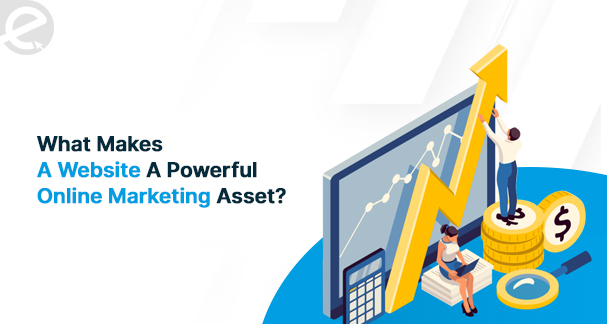
We Develop Websites Keeping Marketing in Mind
Best UX Design Practices To Create A Killer Website And Boost Conversions
 Oct. 13, 2023, 5:13 AM
Oct. 13, 2023, 5:13 AM- By Eclick Softwares and Solutions

UX design motivates the customers to visit a website, and choose the business services and product, convincing them of the spellbound functionality and meaningful user experiences. UX designers have it on their part to ensure the customers are seamlessly accessing and using the website's products and services using any device. Eventually, they maintain the values, accessibility, features, aesthetics and usability of a particular product.
The flow of visitors goes high and conversions double when a company has developed a splendid and mind-convincing UX design. Through the UX designs, they ensure the users are obtaining all the necessary information about the business and their products.
Along with the website and its products, User experience design is even influential on SEO, particularly ranking.
Google is attentive to website speed, user-friendly URL structure and mobile-friendliness while prioritizing the websites.
Keeping in mind the ease of customers to interact with the website, the designers develop easy-to-use and high-quality websites to delight the customers. Customer satisfaction will only become flamboyant when the website's UX design is absolutely applausive. In turn, a great UX design nurtures loyalty and meets customers' needs.
Which Seven Attributes Define A Good UX Design?
Peter Morville, the designer and information architect states a good UX is all about creating website content that the users find:
1. Useful –
A special feature of a website design is problem-solving abilities and enabling users with goal achievement. Finding the right information, they should be able to buy the right product.
2. Usable –
Visitors should use the website intuitively, facing least to no friction from page design or website errors.
3. Discoverability –
Visitors should easily locate the website and keep navigating the website contents.
4. Credible –
The website has to successfully convey that the products and services are trustworthy, and so is the business expertise.
5. Accessible –
The website has to function with perfection on different browsers and devices. All users should have access to the website.
6. Desirable –
The website should be conveying an image, identity and brand evoking the users to come up with a positive emotional response.
7. Valuable –
Users should find value in a website, and feel good. In short, they should be advancing towards their important goal. User satisfaction is directly related to the website owner earning money.
However, balance, as in desirability and usefulness is important in every website.
The Web Design Principles To Make A Great Website And Boost Organic Conversions
The key design principles to elevate a website and boost conversion rates are based on user-centred design approaches.
1. Displaying A Fewer Options To Users
As Hick's Law states, when more choices are presented, longer is the time taken for deciding. In web design, this principle has a very important role in aiding the users' decision-making process with simplicity and clarity. So, by lessening the number of choices for the users, it becomes easier for them to decide quickly and head towards conversions. For instance, limiting the number of products or blogs in the page view, and limiting the number of checkout options.
2. Creating An Aesthetically Appealing and Captivating Layout
In photography, an image is divided into nine equal parts to achieve a balanced composition as per the Rule of Thirds. This principle is applicable to web designs with key elements like texts, buttons and images being aligned along the lines and intersections of the thirds.
As a result, a visually pleasing, easy-to-navigate layout is created that helps the users to understand easily. Utilizing the Rule of Thirds in the website design, makes it easy to create a simple and captivating layout for enticing the users to explore the website products soon.
3. Having Respect For User’s Attention Span
In this fast-paced digital age, there is no patience left for slow-loading websites and finding out necessary information from cluttered websites. Simple, quick-loading pages with no clutter respect the user's attention span. A clean, minimal design that can be easily navigated keeps the users engaged while reducing the bounce rates. Users can get a quick overview of the business's products and services when the website displays minimal text.
4. Negative Space Maximization
The regions between elements on a website are outlined by the negative space. Negative space has to be effectively used so that the users can have their attention to essential features, create visual interest and then improve the overall user experience.
By creating a clean, easy-to-navigate, clean and understandable layout, web designers can maximize the negative space. Moreover, negative space can be employed for crafting a well-balanced and uncluttered layout so the users can quickly locate their required information.
5. Keeping Up With the F-Layout
A commonly used layout for web pages is the F-layout wherein the main elements are arranged in an "F" shape. In this layout, the most critical elements like the header, main content and call-to-action are placed along the horizontal lines of "F".
F-layout is another effective layout for web pages since it is intuitive while allowing the users to quickly find the information they need.
6. Color Has Its Importance In Web Design
Colour has a crucial role play in web designing since it affects the overall emotions, and behaviour of users along with the overall user experience. The right colour scheme creates a visual hierarchy, shifts users' attention to all the essential elements and establishes a brand identity.
Choosing colors wisely so that they complement each other and match identity, leads to clearer and more appealing websites.
7. The K.I.S.S. Principle (Keeping It Everything Simple and Straightforward)
According to the K.I.S.S principle, often keeping things simple is the best. This principle influences web designers to create minimalistic and clean web designs that the users can easily understand and navigate.
User experience improves and the chances of conversions increase when the visuals are kept simple. Likewise, users can easily find the products they are looking for.
8. Applying the 8-Second Rule
As per the 8-Second Rule, the users typically switch over to the other website when its loading speed exceeds more than 8 seconds. To do away with bounce rates and improve user experiences, the website has to load quickly and efficiently. So, image optimization, file compressing, and selecting a fast-hosting provider are essential.
9. Making Use of the Gestalt Similarity Principle
As stated in the Gestalt Similarity Principle, similar objects in shape, colour, or size tend to be perceived as a group. Applying this principle in web design by similar grouping elements like links or buttons makes the websites easy to understand and interact with. With this principle, web designers will improve the overall organization and visual appeal of the website.
10. Faces Incorporation Into Design
Faces increase the sense of familiarity and trust with users. In web designs, faces are indeed a powerful tool. A website becomes more humanized, relatable and approachable when the images of face illustrations are incorporated in a design.
The businesses determined to build up and strengthen trust with confidence, as in the finance or healthcare industries; particularly gain benefits from Faces.
11. Using the High-Quality Images
The visual appeal of a website is enhanced by high-quality images, which even convey a message or brand identity. Using high-quality images of high resolution and professional quality is essential for effectively communicating the business message and leaving a positive impression on users.
Web designers elevate the website's overall website and improve user experience by using only high-quality images.
Poor UX design will ultimately lower the conversions. The experience the website is offering directly affects the conversion rates, along with consumer opinion about the brand. About 67% of customers accuse bad user experience as the chief reason to leave a website. A website's UX design stands out to be the backbone of customer engagement, customer satisfaction and customer retention – all three influence conversion rates.
Related Blog
- By Eclick Softwares and Solutions
- November 21, 2024
Why Good UX Design Mean B ...
UX creates a verified impact on CRO for a website. The users ...
Read More- By Eclick Softwares and Solutions
- November 11, 2024
How Important is a Websit ...
Where the customers land and browse to find their needed pro ...
Read MoreSearch Blog...
Recent Posts
Eclick Services







